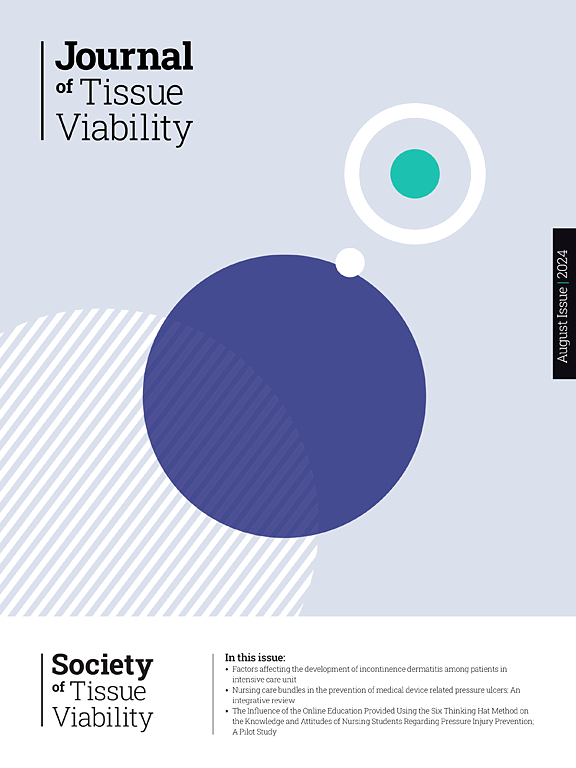Biomarker of pressure injuries in critically ill adults based on large-scale medical Datasets:A multi-center prospective study
IF 2.4
3区 医学
Q2 DERMATOLOGY
引用次数: 0
Abstract
Objectives
Pressure injuries (PIs) are a global health concern, particularly in the context of an ageing population. They impose significant economic and social burdens, serve as key indicators of nursing quality, and are associated with increased mortality and morbidity.
Methods
We conducted a multi-center prospective descriptive study involving 3867 critically ill adults admitted to ICUs across 28 hospitals in Gansu Province, China, from April 1, 2021, to July 31, 2023. Data were collected using the “Long Hu Hui” PI risk management platform, which covers 98 indicators.
Results
The incidence of hospital-acquired PIs was 5.20 %. Univariate analysis identified 15 significant indicators associated with PIs, including body temperature, blood oxygen saturation, and central venous pressure. Logistic regression analysis revealed body temperature, diastolic blood pressure, blood oxygen saturation, haemoglobin, central venous pressure, and blood urea nitrogen as independent risk factors for PIs. A clinical prediction model was developed, demonstrating superior predictive performance compared to existing scales.
Conclusions
This study identified key physiological and biochemical markers associated with developing PIs in critically ill adults. The developed prediction model offers a more accurate tool for clinical risk assessment and may guide preventive strategies.
基于大规模医学数据集的危重成人压力损伤生物标志物:一项多中心前瞻性研究
目的压力性损伤是一个全球性的健康问题,特别是在人口老龄化的背景下。它们造成了重大的经济和社会负担,是护理质量的关键指标,并与死亡率和发病率增加有关。方法我们开展了一项多中心前瞻性描述性研究,纳入了2021年4月1日至2023年7月31日在中国甘肃省28家医院icu入住的3867名危重成人患者。数据采用“龙湖汇”PI风险管理平台收集,共涵盖98项指标。结果医院获得性PIs发生率为5.20%。单变量分析确定了与pi相关的15个重要指标,包括体温、血氧饱和度和中心静脉压。Logistic回归分析显示体温、舒张压、血氧饱和度、血红蛋白、中心静脉压和尿素氮是PIs的独立危险因素。开发了临床预测模型,与现有量表相比,显示出优越的预测性能。结论本研究确定了危重成人发生PIs的关键生理生化指标。开发的预测模型为临床风险评估提供了更准确的工具,并可指导预防策略。
本文章由计算机程序翻译,如有差异,请以英文原文为准。
求助全文
约1分钟内获得全文
求助全文
来源期刊

Journal of tissue viability
DERMATOLOGY-NURSING
CiteScore
3.80
自引率
16.00%
发文量
110
审稿时长
>12 weeks
期刊介绍:
The Journal of Tissue Viability is the official publication of the Tissue Viability Society and is a quarterly journal concerned with all aspects of the occurrence and treatment of wounds, ulcers and pressure sores including patient care, pain, nutrition, wound healing, research, prevention, mobility, social problems and management.
The Journal particularly encourages papers covering skin and skin wounds but will consider articles that discuss injury in any tissue. Articles that stress the multi-professional nature of tissue viability are especially welcome. We seek to encourage new authors as well as well-established contributors to the field - one aim of the journal is to enable all participants in tissue viability to share information with colleagues.
 求助内容:
求助内容: 应助结果提醒方式:
应助结果提醒方式:


